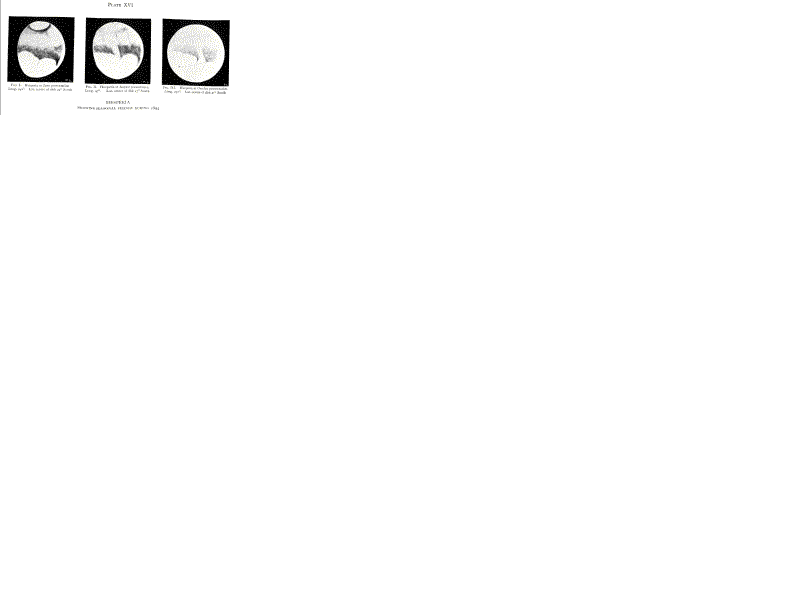Chapter 2
I. Evidence of it
To all forms of life of which we have any conception, two things in nature are vital, air and water. A planet must possess these two requisites to be able to support any life at all upon its surface. For there is no creature, no plant, no anything endowed with the possibility of that kind of change we call life, which is not in some measure dependent upon both of them. How, then, is Mars off for air?Fortunately for an answer to this question, air, in the post-chaotic part of a planet's career, plays as vital a role in the inorganic processes of nature as in the organic ones. By the post-chaotic period of a planet's history we may designate that time in its evolutionary existence which follows the parting with its own inherent heat. After its heat has gone from it, atmosphere becomes essential, not only to any form of life upon its surface, but to the production of any change whatever there. Without atmosphere all development, even the development of decay, must come to a stand-still, when once what was friable had crumbled to pieces under the alternate roasting and refrigerating, relatively speaking, to which the body's surface would be exposed as it turned round on its axis into and out of the Sun's rays. Such disintegration once accomplished, the planet would roll thenceforth a mummy world through space.
An instance of this death in life we have exemplified by the nearest of the heavenly bodies, our own Moon. That cataclysmic changes once occurred there is still legible on her face, while the present well- nigh complete immutability of that face shows that next to nothing happens there now. Except for the possible tumbling in of a crater wall, such as seems to have taken place in the case of Linne a few years ago, all is now deathly still. But atmosphere is as absent as change. Whatever it may have had in the past, there is at present no perceptible air upon the surface of the Moon. And change pro tanto knows it no more.
With Mars it is otherwise. Over the surface of that planet changes do occur, changes upon a scale vast enough to be visible from the Earth. To appreciate the character and extent of these changes we will begin with the appearance of the planet last June.
- See Plates 15
- From the drawings it will be seen that the general aspect of the planet's surface at that time was tripartite. Upon the top part of the disk, round what we know to be the planet's pole, appeared to be a great white cap. This was the planet's south polar cap. The south lay at the top, because all astronomical views are, for optical reasons, upside down; but, inasmuch as we never see the features otherwise, to have them right side up is not vital to the effect. Below the white cap lay a region chiefly bluish-green, interspersed, however, with portions more or less reddish-ochre. Below this, again, came a vast reddish-ochre stretch.
 16
16 17
17 Uppermost figure.
Uppermost figure. The first sign of change occurred in the polar cap. It proceeded slowly to dwindle in size. Such self- obliteration it has, with praiseworthy regularity, been seen to undergo once every two years since it was first seen by man. For nearly two hundred years now, it has been observed to wax and wane with clock- like precision, a precision timed to the change of season in the planet's year. During the spring, these snow-fields, as analogy at once guesses them to be, and as beyond doubt they really are, stretch in the southern hemisphere, the one presented to us at this last opposition, down to latitude sixty-five south and even further, covering thus more than the whole of the planet's frigid zone. As summer comes on, they dwindle gradually away, till by early autumn they present but tiny patches a few hundred miles across. This year, for the first time in human experience, they melted, apparently, completely.
The history of the cap's vicissitudes we shall take up farther on in connection with the question of water. It is only necessary here to note that changes occurred in it.
The disappearance of the polar snows is by no means the only change discernible upon the surface of the planet. Several years ago Schiaparelli noticed differences in tint at successive oppositions both in the dark areas and in the bright ones. These, he suggested, might be due to seasons. At the last opposition, that of 1894, it was possible at Flagstaff, owing to the length of time the planet was kept
| Previous chapter | Back | Home | Email this | Search | Discuss | Bookmark | Next chapter/page |